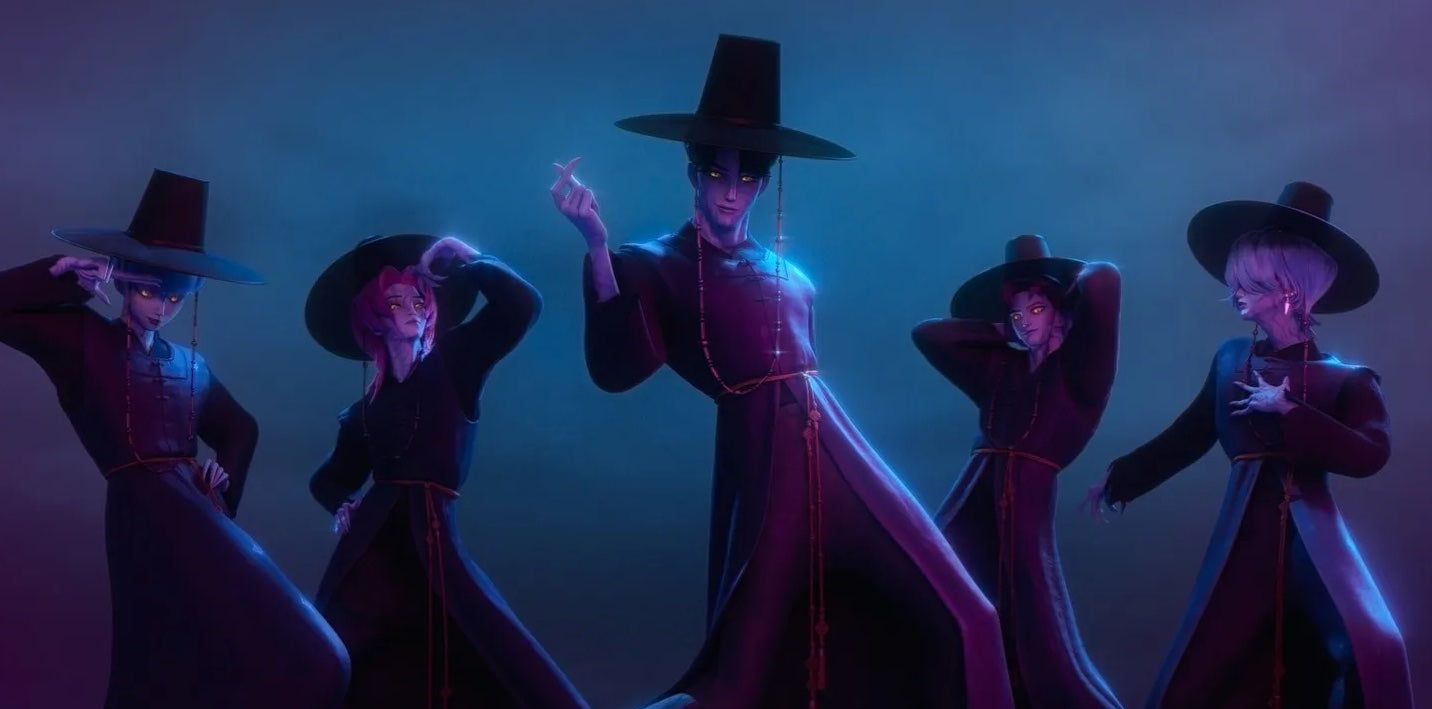A man in a black hat and flowing robe appears quietly. He doesn’t speak, but he’s here for your soul. This is Jeoseung Saja—Korea’s traditional guide of the dead. He’s a deeply familiar figure that many Koreans remember from their childhood ghost stories. But more than a grim presence, the Jeoseung Saja represents the space between life and death.
Traditional Roots of the Jeoseung Saja
The Jeoseung Saja has its roots in a blend of Buddhism, Taoism, and Korean folk beliefs. Traditionally, they appear in pairs, guiding souls to the afterlife governed by King Yeomra.
Modern pop culture often imagines them as expressionless figures in black robes and a black gat. But this "cool reaper" image is largely a product of recent media. In reality, traditional Korean paintings—especially from the late Joseon dynasty—depicted Jeoseung Saja in vivid and ornate clothing.
They were sometimes shown wearing red robes, colorful sashes, or detailed patterns, appearing more like solemn officials than dark phantoms. This diversity of depictions reveals the Jeoseung Saja as a complex figure—representing authority, transition, and balance in the afterlife.

Left: A traditional Jeoseung Saja . Right: A modern depiction of the grim reaper in black attire.
From Symbol of Death to Style Icon
In modern media, the Jeoseung Saja has transformed into a stylish, symbolic figure. A key example is Lee Dong-wook’s portrayal in the hit drama Goblin, where the reaper wears a sleek suit, walks city streets, and quietly struggles with human emotions.

Actor Lee Dong-wook in the K-drama Goblin, wearing black attire.
This updated image has inspired K-fashion and visual art. The wide-brimmed gat, the flowing lines of the robe, and the minimal black palette have become iconic aesthetics across fashion shoots, music videos, and illustration.

From Stage to Screen: The Expanding Narrative of Korea’s Grim Reaper
Today, the Jeoseung Saja is no longer confined to folktales or traditional paintings. His image has evolved—appearing on global stages and animated screens as a symbol of style, emotion, and reimagined identity in modern culture.
In the global dance competition World of Street Woman Fighter, TEAM KOREA’s crew “BEOMJUP” presented a stunning performance titled “Dreamscape – On the Border of Dreams.” Drawing from traditional reaper imagery, they used rotating gats, dark costumes, and rhythmic movements to express the threshold between life and death, dream and reality. Their choreography served as a visual bridge between tradition and modern expression.
Meanwhile, the Netflix animated film Kpop Demon Hunters introduces a fictional boy group called Saja Boys, created by a demon named Jinwoo to secretly collect human souls. Styled with reaper-inspired visuals—black outfits, red thread, and a haunting presence—the group reflects a darkly elegant reinterpretation of the Jeoseung Saja. Jinwoo, however, turns out to be a morally complex character who ultimately sacrifices himself to return the stolen souls to humanity.

Both works demonstrate how the Jeoseung Saja has transformed into a visually compelling and culturally resonant symbol—no longer just a harbinger of death, but a narrative force that bridges tradition and imagination in today’s pop culture.
Korea’s Reaper vs. the Grim Reaper
Western culture has the Grim Reaper—skeletal, scythe-wielding, and fearsome. But Korea’s Jeoseung Saja evokes a more complex emotion: fear, yes, but also reverence, sorrow, and even peace.

Tradition Doesn’t Stop. It Evolves.
At Korelimited, we draw inspiration from the way tradition transforms over time.
The Jeoseung Saja is no longer just a figure of the past— he appears in today’s culture through fashion, performance, and storytelling.
What was once a symbol of death is now a symbol of creative identity and evolving heritage.



Leave a comment